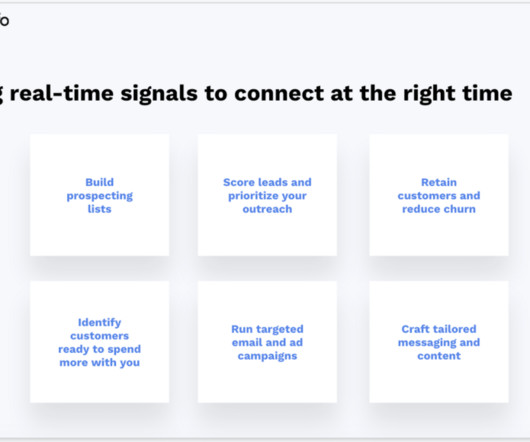Intent Data is a superpower. Here’s why.
Zoominfo
MAY 27, 2021
Imagine, however, that on top of having access to a universe of sales and marketing data, you could sift through it all quickly to zero in on just those in-market prospects on the hunt for a solution like yours — actively doing more research online for a problem that you can solve. But how does ZoomInfo Intent work?






















Let's personalize your content